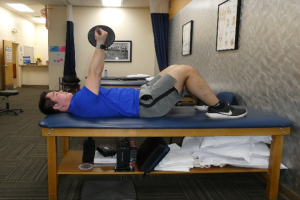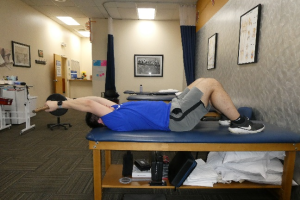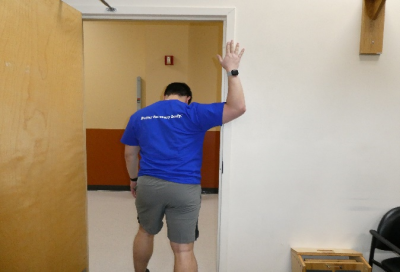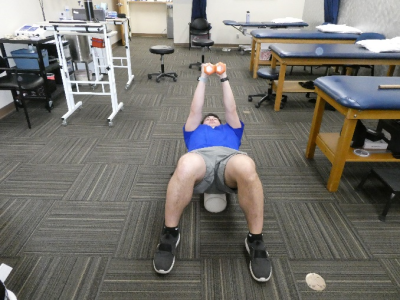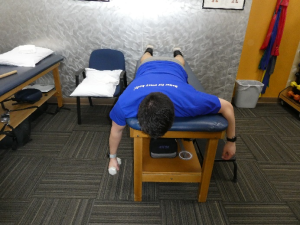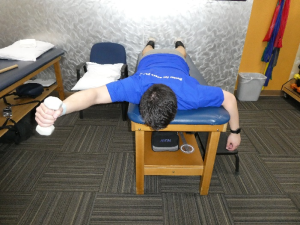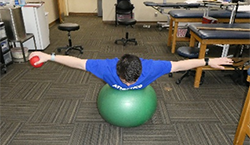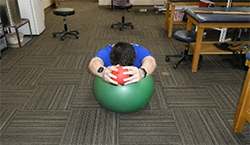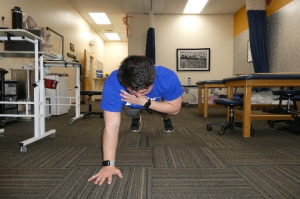Take The Rest Where You Can Get It
Elite swimmers could only have up to 2 weeks off from swimming during the entire year, which typically happens between club and high school seasons. When these breaks come up, take the time to rest and allow your body to recover from the strain on it during the past season. Recovery can come in many different forms. The first could look at sleeping and eating more than usual, which gives the body extra energy to recover, lay down muscle fibers and let tissues heal. Another form of recovery could be an active recovery in biking or running to maintain cardiovascular conditioning while allowing the shoulders to take on less strain. Finally, be mindful of your return to swimming after a period away from the sport. Work with your coaching staff on a plan to gradually increase your time and distance in the pool to avoid overuse and training injuries.
Get The Right Things Moving
Due to the repetitive nature of swimming, some muscular structures will inherently become tight and should be addressed both during the season and off-season. The muscles that most often become stiff in swimmers are the pectoral muscles and the lats. While simple stretching exercises will address this issue, you can take it to the next level by adding some light load to these stretches to allow the muscle fibers to elongate. Most importantly, ensure you are engaging your core while stretching to improve the positioning and make them functional and carry over to your swimming positions. Below are some simple versions of these stretches and a loaded version.
Wall Lat Stretch
Lift one arm straight overhead and rest it on the wall with your thumb pointing out. Rotate your body away from your arm, leaning into the wall, and hold.
Lat Eccentric
Keeping your core tight, slowly lower the loaded dowel rod over your head to feel the stretch along the lateral portion of your shoulder blades.
Doorway Pec Stretch
With the arm at a 90-degree angle, step through the door in order to feel the stretch in the front of the chest.
Loaded Pec Flys Over Foam Roll
Lift the weights over the middle of your chest and slowly lower the weights towards the floor to feel the stretch in the front of the chest.
Improve Body Awareness
Now while swimmers can have stiffness in the pectorals and lats, they are also notorious for having poor posture and hypermobility in the shoulder. While stretching these tight structures will improve mobility, this needs to be followed up with some focused work on improving posture and stability of the shoulder. Focusing on improving the strength of the muscles surrounding the shoulder blades and rotator cuff and working on body stabilization and awareness by engaging the core is vital to ensuring longevity with swimming. Try these exercises to improve your posture and shoulder strength, and stability.
Prone Shoulder Flexion
With the arm off the edge of the table, lift your arm into a “Y” position to lift the weight parallel to the floor.
Face Pulls
Squeeze your shoulder blades together as you pull your hands back toward your ears. As you pull with your arms, rotate your arms backward so that your hands end just above your shoulders. Initiate the return by allowing your shoulders to rotate forward so your forearms are parallel to the ground. Then, allow the arms to move forward slowly. Finally, as the arms extend forward in front of you, let your shoulder blades move forward.
Swiss Ball Snow Angels
With your chest supported by the Swiss ball, pass a small object between your hands while keeping your shoulder blades squeezed back and your arms kept parallel to the floor.
Plank Shoulder Taps
Hold a plank position and lift one hand off the ground to tap your opposite shoulder. Return to starting position and repeat with your other hand.
What Is Your Next Step?
Try some of these off-season practices and add some of these stretches and exercises to your land-based training to improve your swimming resiliency. If you feel you have an injury from swimming, physical therapy may be able to help you. If you have questions about managing these issues, please contact your local Athletico Physical Therapy clinic and schedule a free assessment. Free assessments are available in-clinic and virtually through our Telehealth platform.
*Per federal guidelines, beneficiaries of plans such as Medicare, Medicaid, Tricare, VHA and other federally funded plans are not eligible for free assessments.
The Athletico blog is an educational resource written by Athletico employees. Athletico bloggers are licensed professionals who abide by the code of ethics outlined by their respective professional associations. The content published in blog posts represents the opinion of the individual author based on their expertise and experience. The content provided in this blog is for informational purposes only, does not constitute medical advice and should not be relied on for making personal health decisions.
About the Author:
Zach Kirkpatrick is a physical therapist and clinic manager with a passion for treating various athletes ranging from football to baseball players and Olympic lifting and CrossFit. Follow Zach to receive advice on how to recover from injuries, prepare for upcoming sports seasons, or strength and conditioning topics, so you don't feel lost when it comes to returning from sport or getting into a new fitness adventure.

 width="900"
height="356"
>
width="900"
height="356"
>

